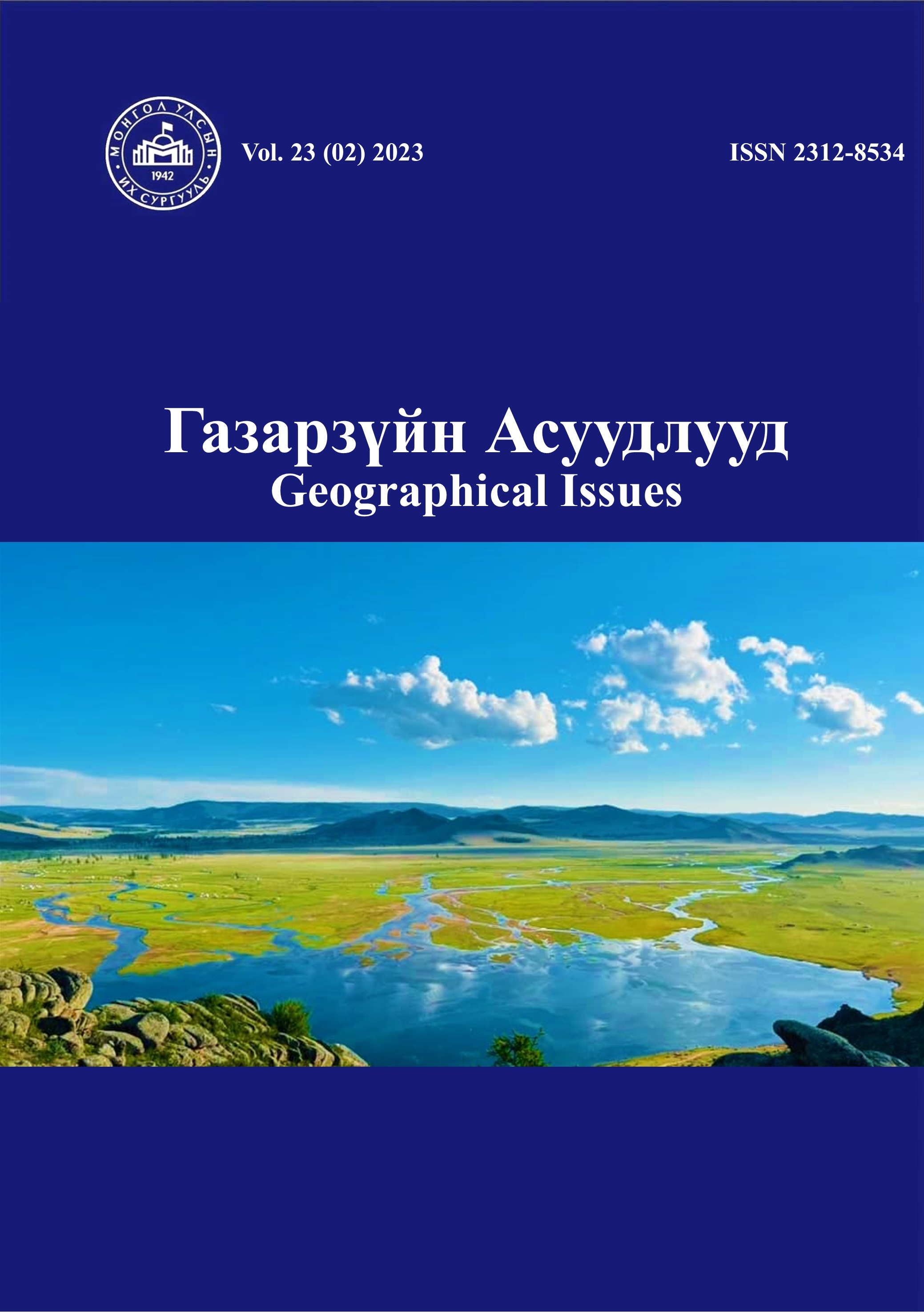Analysis of the spatial distribution of heavy metals in drinking groundwater of the Kherlen River Valley, Eastern Mongolia
Хэрлэн голын хөндийн дагуух газрын доорх усны хүнд металлын орон зайн тархалтын шинжилгээ
Keywords:
Kherlen river, Groundwater contamination, Heavy metals, Spatial analysisAbstract
The Kherlen River Basin holds significant strategic importance and is often considered in the comprehensive groundwater utilization plan due to its unique characteristics. Our study focused on analyzing the concentration and spatial distribution of 53 heavy metals (HMs) in groundwater within the Kherlen river valley in East Mongolia. The findings revealed the presence of 5 heavy metals (Mn, Ni, As, U, Sr) out of the 53 in the collected groundwater samples. A total of 60 drinking groundwater samples were collected between 2021 and 2022, and the concentrations and spatial contributions of heavy metals such as manganese (Mn), strontium (Sr), nickel (Ni), arsenic (As), and uranium (U) were analyzed. The distribution of HMs along the river valley was determined using the IDW (Inverse Distance Weighting) interpolation method. The results indicated that manganese (Mn) had the highest concentration at 908 µg/L, while cadmium (Cd) had the lowest concentration at 0.01 µg/L. When compared to Mongolia's drinking water standard, the exceeding rates for manganese (Mn), uranium (U), nickel (Ni), strontium (Sr), and arsenic (As) concentrations were 31.6%, 16.6%, 15%, 8.3%, and 3.3% respectively. Copper (Cu) and cadmium (Cd) did not exceed the corresponding standards. The spatial distribution of heavy metals primarily originated from both natural and anthropogenic sources.
Downloads
Downloads
Published
How to Cite
Issue
Section
License

This work is licensed under a Creative Commons Attribution-NonCommercial-ShareAlike 4.0 International License.






